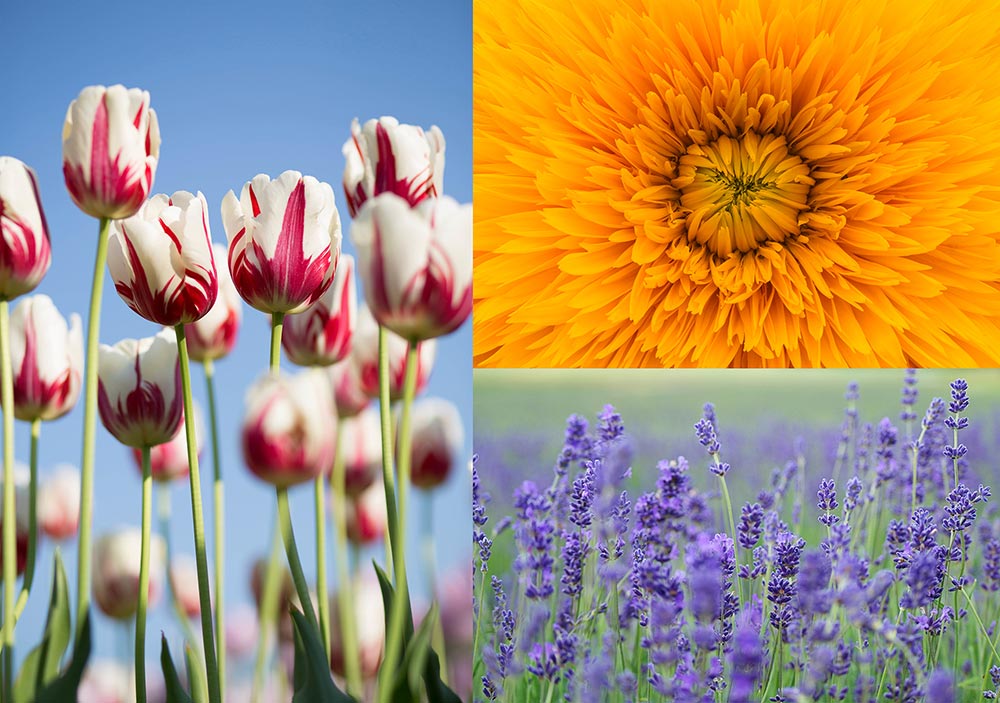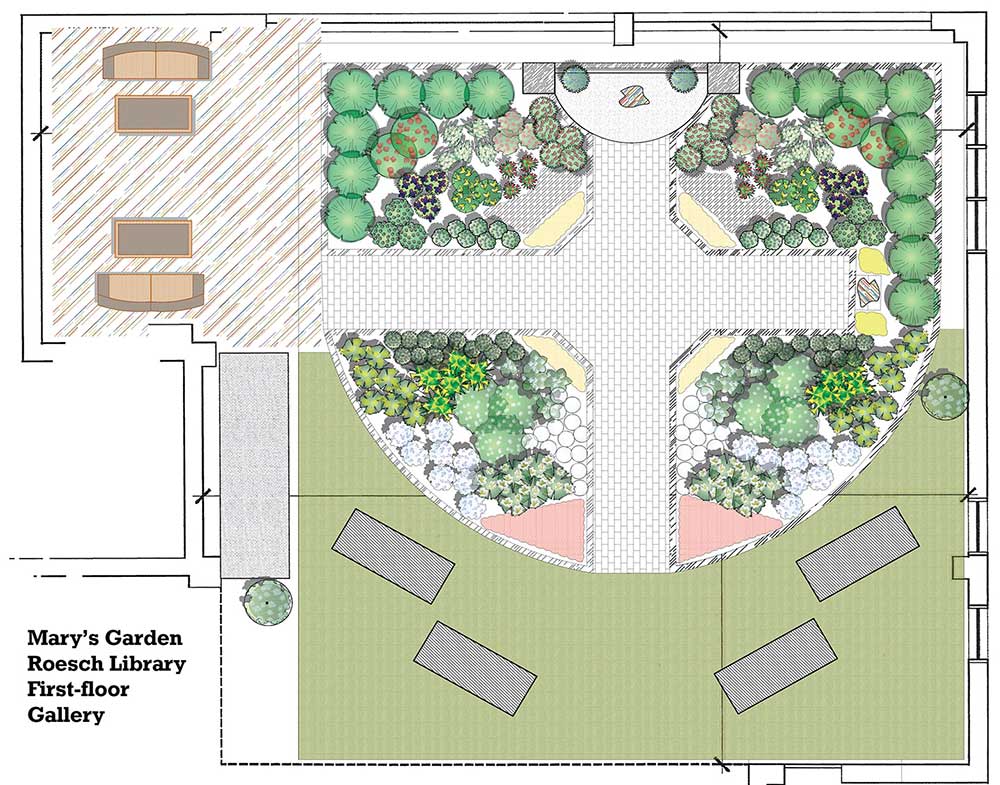Flowers for Mary
In Roesch Library this spring, Mary’s Star will bloom alongside Easter Spikes, with Mary’s Tears falling near Our Lady’s Veil.
Flowers named for Mary, the Mother of Christ — commonly known as daffodil, hyacinth, bleeding heart and baby’s breath — will be part of the live garden exhibit being planted in the first-floor library gallery space. Mary’s Gardens is open to the public March 25 to May 10 during library hours.
Gardens were first planted specifically for Mary as early as the seventh century. In the early 1950s, John S. Stokes Jr. revived the tradition and brought it to America. His Mary’s Garden research is housed in a special collection at UD’s Marian Library.

“It is really a unique approach to library exhibits,” said Sarah Cahalan, director of the Marian Library, which houses the largest collection in the world of printed materials and artifacts on Mary. “This is an opportunity for everyone to think about how gardening can play a role in their lives and to reflect on the spirituality of our interactions with nature.”
Visitors can stroll down paved paths, reflect at the statue “Seat of Wisdom” and learn about the naming of flowers for Mary, a tradition that stretches back to medieval times. The exhibit, planned by the Library Advisory Committee including Georgiana Nye ’70, Sue Ellen Anderson Boesch ’67 and Linda Arvin Skuns ’63, will also include prayer and meditation opportunities.
Portions of the gardens will be replanted four times to showcase flowers from the four seasons. Marty Grunder ’90 contributed the garden design, and his company, Grunder Landscaping, will plant and maintain the display.
The exhibit also includes paintings of flowers inspired by Mary by artist Holly Schapker on the library’s seventh floor, and items from Stokes’ personal collection on display on the second floor. Tours will be held April 8 and April 29, and advance registration on the Mary’s Gardens website is recommended.
Much of Stokes’ collection, including planting guides, is also available online.
“Stokes really wanted to make Mary’s Gardens accessible,” Cahalan said. “They were meant to be places of meditation and prayer, and he wanted them to be available even in the hustle and bustle of modern life. He wanted there to be options for people who didn’t have a lot of space or time, so he had suggestions for kitchen gardens, dish gardens. There isn’t just one way to plant a Mary’s Garden. It can be different things to different people.”
For an indoor dish garden, Stokes suggested the hedge-hog cactus, known as Lady’s Finger, with its magenta pink blooms.
For outdoor planting, he offered the pansy — Our Lady’s Delight — for spring blooms and the sunflower — Mary’s Gold — for summer.
Visitors can take a virtual tour of the garden after the exhibit opens. For information on the video, tours, online collection and parking, visit go.udayton.edu/marysgardens.
Mary's Botanical Beauty, on display include Campanula glomerata (Canterbury Bells) “Our Lady’s Nightcap”; Cyclamen “Our Lady’s Little Ladles”; Daffodils “Mary’s Star”; Dianthus (Pink) “Our Lady’s Cushion”; Dicentra spectabilis (Bleeding Heart) “Mary’s Tears”; Digitalis purpurea (Foxglove) “Our Lady’s Gloves”; Gypsophila (Baby’s Breath) “Our Lady’s Veil”; Hemerocallis (Daylily) “Eve’s Thread”; Hyacinth “Easter Spikes”; Iris sibirica “Mary’s Sword”; Lavendula a. (Lavender) “Mary’s Drying Plant”; Chrysanthemum (Mum) “All Saints Flower”; Paeonia (Peony) “Mary’s Rose”; Begonia x hiemalis (Rieger Begonia) “Mary’s Fringe”; Rudbeckia f.f (Black-eyed Susan) “Golden Jerusalem”; Rosa x (Rose) “Mary’s Thorn”; Thuja o. (Arborvitae) “Tree of Life”; Tulips “Mary’s Prayer”
